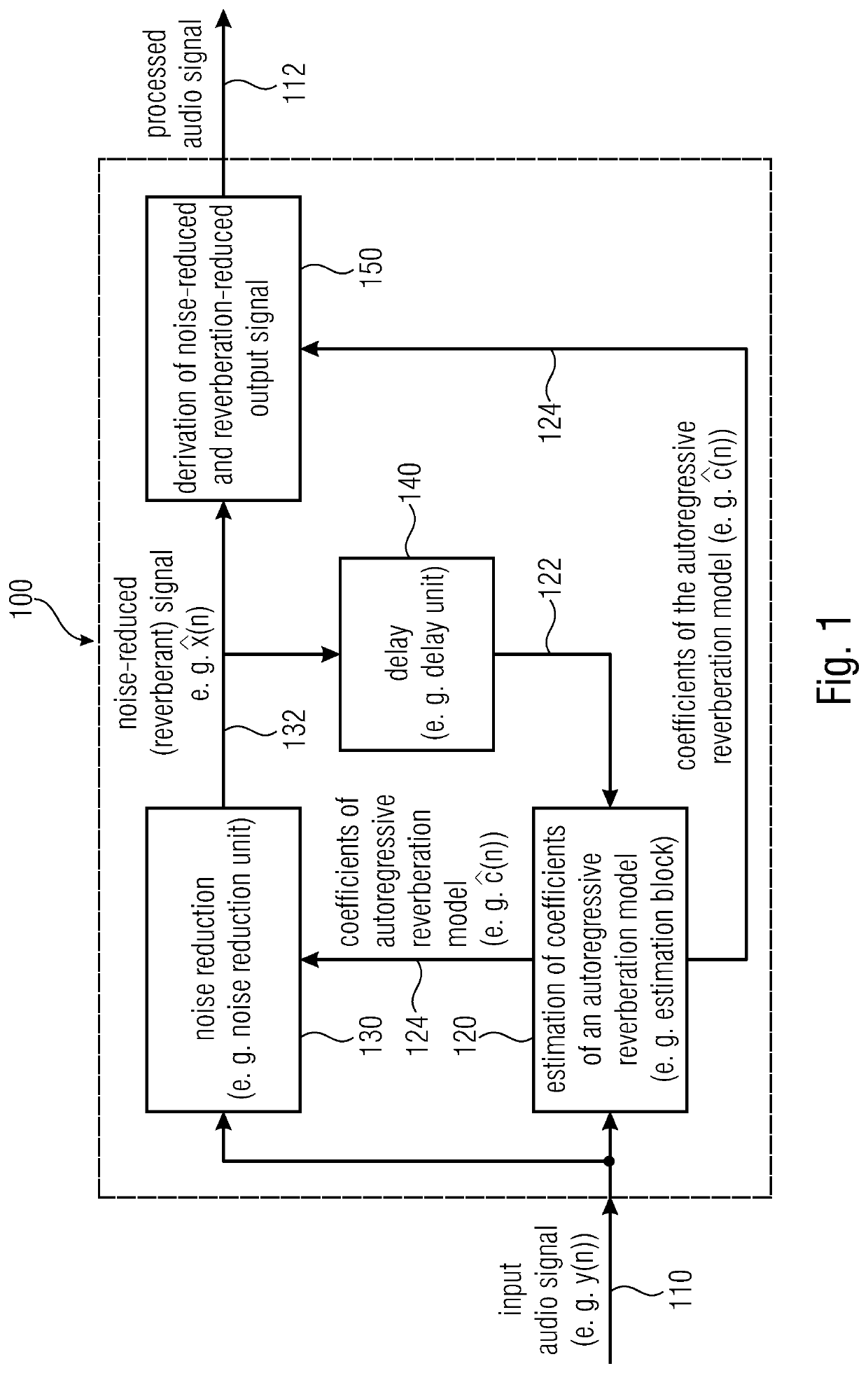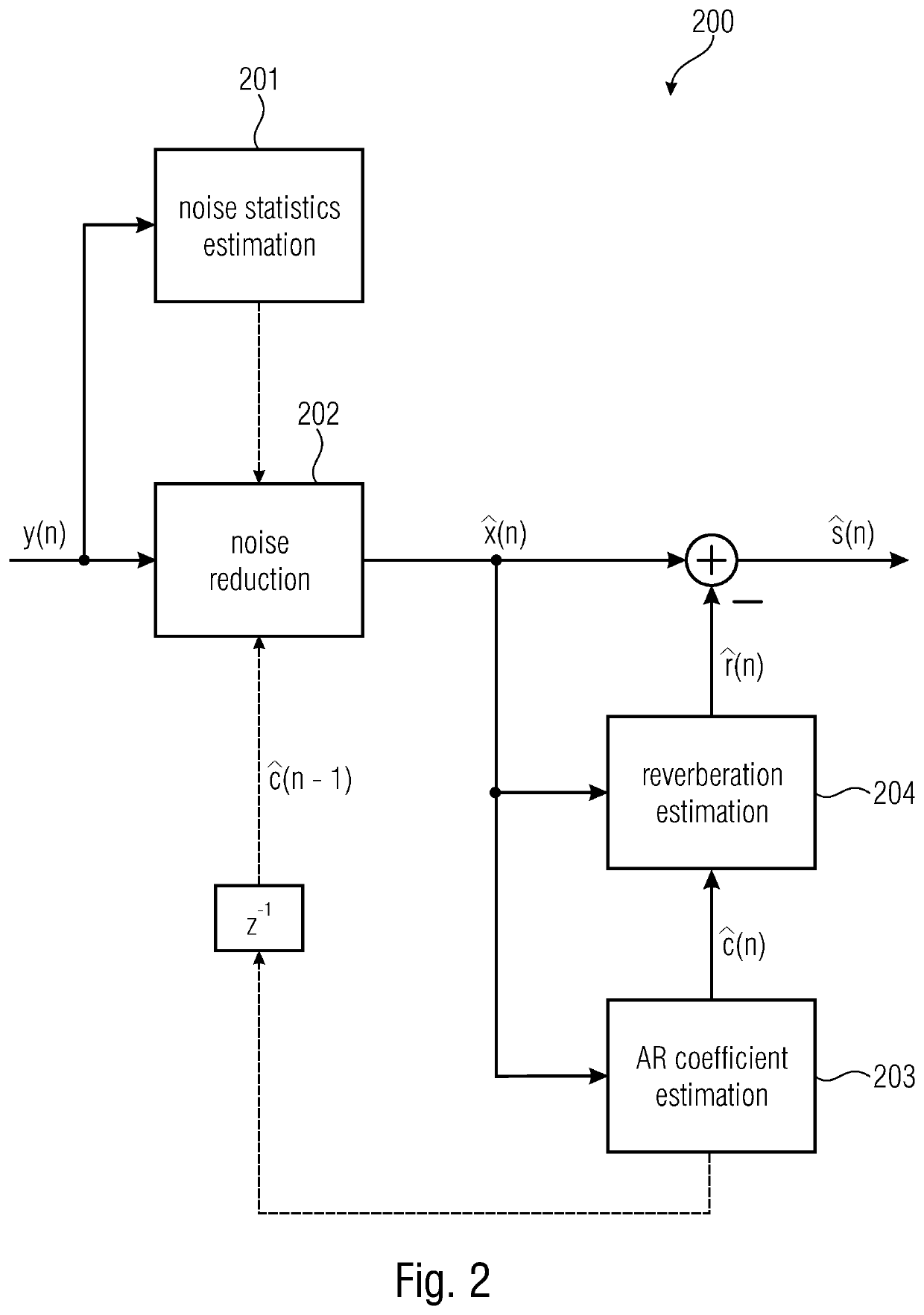Signal processor and method for providing a processed audio signal reducing noise and reverberation
a signal processor and audio signal technology, applied in the field of signal processor and method for providing a processed audio signal, can solve the problems of speech quality and intelligibility typically degraded, difficult and partly unsolved tasks, and degraded audio quality, so as to achieve good results and good quality of the audio signal
- Summary
- Abstract
- Description
- Claims
- Application Information
AI Technical Summary
Benefits of technology
Problems solved by technology
Method used
Image
Examples
Embodiment Construction
1. Embodiment According to FIG. 1
[0074]FIG. 1 shows a block schematic diagram of a signal processor 100, according to an embodiment of the present invention. The signal processor 100 is configured to receive an input audio signal 110 and is configured to provide, on the basis thereof, a processed audio signal 112, which may, for example, be a noise-reduced and reverberation-reduced audio signal. It should be noted that the input audio signal 110 can be a single-channel audio signal but is advantageously a multi-channel audio signal. Similarly, the processed audio signal 112 can be a single-channel audio signal but is advantageously a multi-channel audio signal. The signal processor 100 may, for example, comprise a coefficient estimation block or coefficient estimation unit 120, which is configured to estimate coefficients 124 of an autoregressive reverberation model (for example, AR coefficients or MAR coefficients of a multi-channel autoregressive reverberation model) using the sin...
PUM
 Login to View More
Login to View More Abstract
Description
Claims
Application Information
 Login to View More
Login to View More - R&D
- Intellectual Property
- Life Sciences
- Materials
- Tech Scout
- Unparalleled Data Quality
- Higher Quality Content
- 60% Fewer Hallucinations
Browse by: Latest US Patents, China's latest patents, Technical Efficacy Thesaurus, Application Domain, Technology Topic, Popular Technical Reports.
© 2025 PatSnap. All rights reserved.Legal|Privacy policy|Modern Slavery Act Transparency Statement|Sitemap|About US| Contact US: help@patsnap.com



